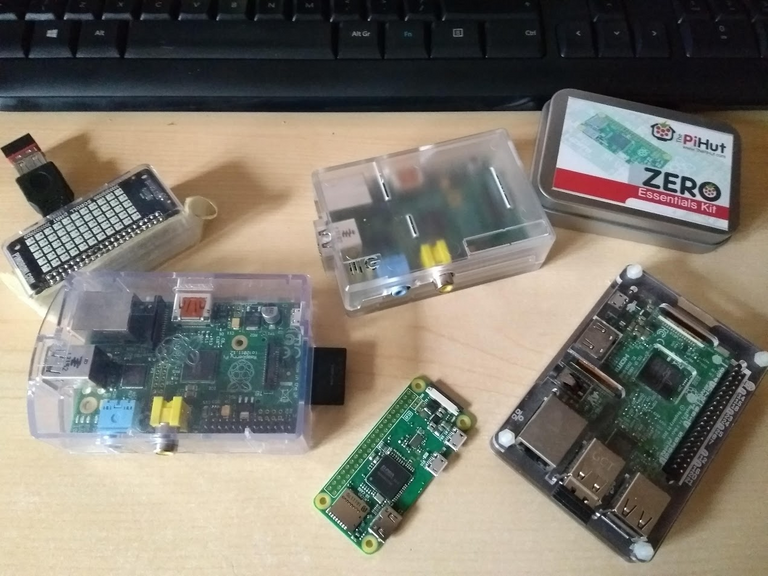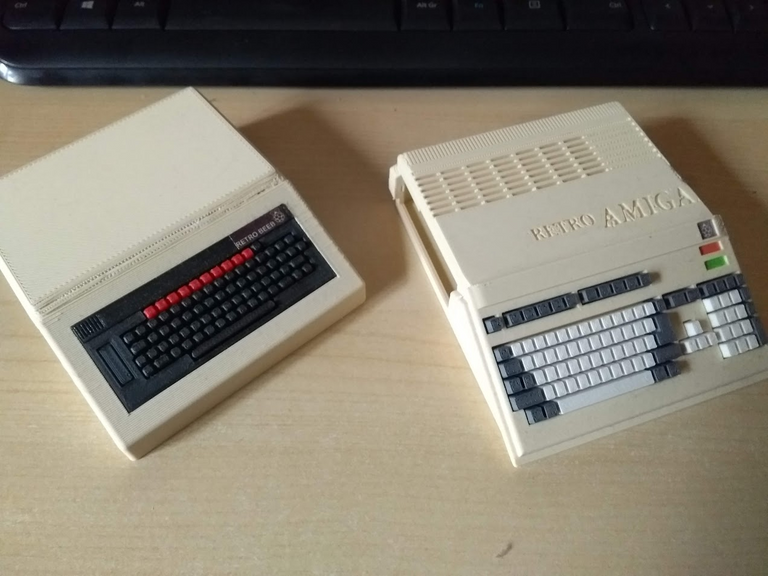STEMGeeks Favourite Gadget Contest: Raspberry Pi
I saw this contest and composed an entry about one of my guitar gadgets. Until today I was the only entry, but there are a couple more now. There are STEM tokens to be won. You can enter once per day.
The Raspberry Pi is a small computer that has changed the world. The original idea was to have something that could be used in schools to encourage programming and experimentation as kids were just learning to use applications such as Office. In my later years at school we got the BBC Micro, but those must have cost the equivalent of £1000 each. The Pi cost around £35 (or $35), but you had to factor in the costs of a case, memory card, power supply and cables as well as keyboard, mouse and screen. They have tried to keep the base price the same each time an improved model is released. One advantage of this low price is that if the kids blew one up it would not cost much to replace. The design encouraged interfacing to other hardware by having a set of pins for switches, LEDs and other, more complex, circuits.

My little collection
There had been various single board computers before, but a lot of those are really micro-controllers such as the Arduino that are not intended to be used like a PC. The Pi is a fully functional computer that can run a graphical interface. Generally this will be Linux and there are lots of versions of that available. It is even possible to run a cut-down version of Windows on the more powerful models. Running a graphical Linux system on the original models could be a bit of a painful experience as they did not have much memory and the processor was not that powerful.
Although the Pi was intended for schools adoption was limited by lack of staff with the appropriate skills and lack of time in the busy curriculum. There have been volunteer-driven efforts to address this with code clubs where kids can learn to program with Scratch or Python. You can run Minecraft on a Pi and use programs to control it.
A couple of Pis were sent to the ISS as part of the Astro Pi project and schools can suggest applications to run on them there.
The Raspberry Pi Foundation is a charity based in the UK and I believe all their designs are put in the public domain. Production was originally in China, but it was found to be viable to bring it back to Wales.
Where the Pi really took off was amongst hobbyists. They really took advantage of having a cheap, all-purpose computer that could be used for home automation, robotics, media streaming, retro gaming and many other uses. This has resulted in a huge market in accessories such as small LCD screens, various interfaces, audio cards, LED arrays etc that can plug into the interface pins. Some models also have an interface for a camera that can be used for surveillance or image processing. The advantages over using a conventional PC include size, power consumption and noise (there are no fans or other moving parts).
I had read lots about the Pi, but then someone bought me a Pi Model B one Christmas. I played with it a little, but did not find a use for it until I found the Home Assistant home automation software. I had an old automation system that was limited and hard to set up. The Pi with this software could perform most of the same functions plus a lot more. I later upgraded to a faster Model 3, but need to set this up again as the memory card failed. The Model 3 and the new Model 4 have quad-core processors as well as built-in Bluetooth and WiFi. The Model 4 has options for more memory (up to 4GB) and two HDMI outputs. It was possible to attach a second screen to previous models using an adaptor on the interface pins to a VGA monitor. I saw this being done a Pi meetup in a local pub. There I also saw various robots and gaming systems. There is a really active community of users around the world who post their projects online to inspire others.
I also tried using the Model B to run Pi-hole, which is a DNS server you can have on your network that filters out advertising. It works well, but you may have to spend time adding exceptions to make certain web sites work.
I also bought a couple of Pi Zero boards. These are less powerful, but much smaller. One of mine has an LED matrix display attached. I had to solder on the 40-pin connector myself, although you can get them with this already done now. There are models with and without WiFi. One issue with this board is that it uses mini USB and HDMI connections that may require adaptors. I bought a set of those on eBay.
I just acquired another Model B that had been donated to a charity shop, so I now have five of these small computers and am not actively using them. One will go back to running the home automation and I would like to have the one with the matrix display on my desk to show me crypto prices or other useful information. My kids are not that into IT and so have not shown much interest in them. I have not had enough time to explore more projects myself. I like the idea of running old video games with emulators, but cannot find much time for that either.
I bought a couple of 3D printed cases from a Steem user that look like some computers I have owned before.

What is your favourite gadget?
The geeky guitarist and facilitator of the 10K Minnows Project.

- I'll buy guitar picks for Steem
- Get a Wirex Debit Card to spend your crypto.
- Get some passive income with Mannabase
- Get paid to search at Presearch
- Battle for cards on Steem Monsters
- I have Steem accounts to give away to worthy people!
Thanks for using eSteem!
Your post has been boosted with ESTM. Keep up the good work! Install Android, iOS Mobile app or Windows, Mac, Linux Surfer app!
Learn more: https://esteem.app
Join our discord: https://discord.gg/8eHupPq
I still have a Pi sitting just waiting to be used for something. 2nd gen i think.
Posted using Partiko Android
I have a couple of these sitting in my office. They are really awesome little machines. I haven't really found a practical use for them personally yet, but I am still planning on digging into one of them. I just need a project I can apply one to.
Hi, @steevc!
You just got a 4.73% upvote from SteemPlus!
To get higher upvotes, earn more SteemPlus Points (SPP). On your Steemit wallet, check your SPP balance and click on "How to earn SPP?" to find out all the ways to earn.
If you're not using SteemPlus yet, please check our last posts in here to see the many ways in which SteemPlus can improve your Steem experience on Steemit and Busy.
Hi @steevc!
Your post was upvoted by @steem-ua, new Steem dApp, using UserAuthority for algorithmic post curation!
Your UA account score is currently 5.957 which ranks you at #353 across all Steem accounts.
Your rank has not changed in the last three days.
In our last Algorithmic Curation Round, consisting of 143 contributions, your post is ranked at #18.
Evaluation of your UA score:
Feel free to join our @steem-ua Discord server
I had a little device called CHIP. Only one core and 512mb ram, not as fast as a pi, but it had 4gb flash instead of a micro SD card, Wifi & Bluetooth, and all for only $9! I mostly used it to keep my Linux skills from withering away, but did do a few experiments to gauge the utility of these little machines.
A Pi 4 is definitely gotten a useful level of power! Time to re-engage!
There are lots of similar devices, but the Pi seems the most popular. I need to make use of those I have before I consider buying more.
Absolutely! Pi has the best community support and the most reliable design (if you are picky with your usb-c power cable choice in the case of the Pi-4 ;). And I forgot to mention that the CHIP company went out of business a year after I got it.
I think anyone with a hobby computer like a Pi has several devices in various stages of usability in a room somewhere. I know I do!
Posted using Partiko iOS